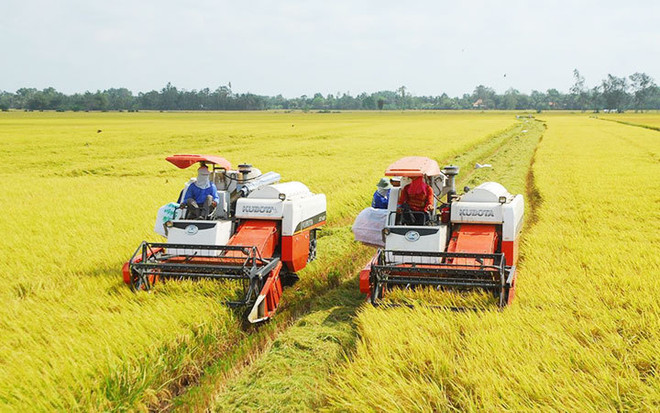 Checking the growth and development of rice produced according to organic standards the central province of Ha Tinh. (Photo: nhandan.vn)
Checking the growth and development of rice produced according to organic standards the central province of Ha Tinh. (Photo: nhandan.vn)The organic rice production model, coupled with product consumption links, has so far been deployed in the north-central provinces of Nghe An, Ha Tinh, and Quang Tri, spanning an area of 240 hectares.
According to statistics, the yield from the model hit 6.38 tonnes per hectare, marking a 10% increase in efficiency compared to conventional methods. By employing organic production processes and using biologically-based products, safe rice is produced, leading to a 20% increase in profits for farmers compared to traditional rice cultivation.
One of the active participants in organic rice production, the Que Lam Group has expanded this model nationwide. Ton That Thanh, a representative of the enterprise, elaborated its no-chemicals production began in the central province of Thua Thien-Hue.
Now, the group is capable of cultivating 200 hectares of organic paddy per crop in the locality. It has also invited cooperatives and farmers from various regions to visit and learn from its experience, aiming to replicate the practice on a broader scale. By now, Que Lam has produced organic rice on around 1,000 hectares in such provinces as Ha Tinh in the central region, Vinh Phuc and Thai Nguyen in the north, and Dong Thap and Dong Nai in the south.
Thanh said assessments show that organic rice farming in the central region not only generates clean and environmentally-friendly products thanks to the avoidance of chemical usage but also increases average profits by 1 million VND (44.66 USD) per "sao" (a traditional Vietnamese unit of land measurement, one sao is equivalent to roughly 500 square metres for the region) for local residents.
However, transitioning to organic rice cultivation doesn't immediately gain the support of farmers. Discussing this matter, Nguyen Huu Ngoc, Deputy Director of the Ha Tinh Agricultural Extension Centre, explained that farmers have been accustomed to using chemical fertilisers and pesticides for a long time, and switching to organic standards can bring about challenges. They also need access to reputable suppliers of organic biological fertilisers. Moreover, the price of organic rice in the market is not significantly higher than conventionally produced one, so farmers may not be willing to adopt the new practice.
 Vietnam's total area of organic arable land now exceeds 175,000 hectares, including 63,536 hectares for crops. (Photo: VNA)
Vietnam's total area of organic arable land now exceeds 175,000 hectares, including 63,536 hectares for crops. (Photo: VNA)“Enterprises can help farmers access scientific techniques, inputs, and ensure market outlets. If enterprises collaborate with farmers, it will undoubtedly boost their confidence in production and ensure the quality of the final product,” he said.
According to the Ministry of Agriculture and Rural Development (MARD)’s Department of Quality, Processing and Market Development, 62 localities nationwide are participating in organic farming or are in the process of transitioning to the practice. The total area of organic arable land now exceeds 175,000 hectares, including 63,536 hectares for crops./.




























